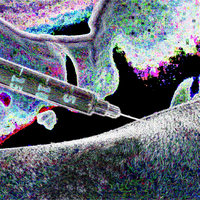| Dihydrocodeine | |
|---|---|
| Molecular structure via molpic based on CDK |
| Physical properties [] | |
|---|---|
| Molecular mass | 301.4 g/mol [1] |
| Predicted LogP | 2.2 [1] |
| Structural Identifiers [] | |
|---|---|
| Molecular formula | C18H23NO3 [1] |
| IUPAC name | (4R,4aR,7S,7aR,12bS)-9-methoxy-3-methyl-2,4,4a,5,6,7,7a,13-octahydro-1H-4,12-methanobenzofuro[3,2-e]isoquinolin-7-ol [1] |
| SMILES | CN1CC[C@]23[C@@H]4[C@H]1CC5=C2C(=C(C=C5)OC)O[C@H]3[C@H](CC4)O [1] |
| InChI | InChI=1S/C18H23NO3/c1-19-8-7-18-11-4-5-13(20)17(18)22-16-14(21-2)6-3-10(15(16)18)9-12(11)19/h3,6,11-13,17,20H,4-5,7-9H2,1-2H3/t11-,12+,13-,17-,18-/m0/s1 [1] |
| InChIKey | RBOXVHNMENFORY-DNJOTXNNSA-N [1] |
| Dosing[] |
|---|
| Oral [] | |
|---|---|
| Threshold | 8 |
| Light | ≤ 8 |
| Common | 8 - 30 |
| Strong | 30 - 60 |
| Heavy | 60 - 105 |
Statistically derived dosages via DBI-IGS We do not take any responsibility for medical complications or loss of life sustained by following these dosages blindly. |
Dihydrocodeine
Dihydrocodeine (also known as Novicondin, Rapacodin, Codhydrine, Dehacodin, 8,14-Dihydroneopine, Dihidrocodeina, Dihydroneopine, Hydrocodeine, Novicodin or Cohydrin) is a
Chemistry
Salts []
Dihydrocodeine is typically found in the form of its phosphate, tartrate, bitartrate and hydrochloride salts.
Stereochemistry []
Dihydrocodeine is a absolute mixture
 Anodyne
Anodyne